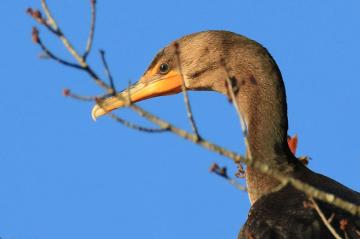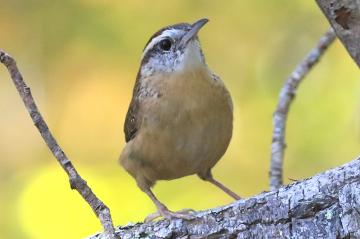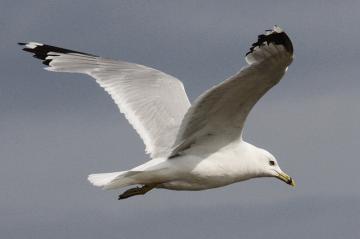Martha’s Vineyard News | Buzz Birds – The Vineyard Gazette – Martha’s Vineyard News
[ad_1]
Adult bald eagles are near the top of most birders wish lists. We all get a buzz of excitement when we see them, and many have never seen a wild adult eagle before. Gus Ben David confirmed their first nesting attempt on the Vineyard last week. Unfortunately, their nesting attempt failed when the returning osprey attempted to drive off the much larger eagles (see the details of this encounter in last week’s Gazette). Remember it was just 50 years ago when the widespread application of the pesticide DDT had virtually wiped out all eagles except for those in Alaska? What a comeback!
Another species that has made a rapid recovery since the use of DDT was banned by the Nixon administration in 1973 is the osprey. In recent years the Island has hosted approximately 100 breeding pairs of osprey. Their arrival is eagerly anticipated as an early sign of spring.
On March 18, Claire Gray reports one arrived at Crystal Lake while Tim Rush spotted one at Long Point. Adam Smith spotted one at Oyster Pond, and they returned to the Oak Bluffs pumping station (a webcam is on that nest).

Double crested cormorant.
— Lanny McDowell
There were multiple reports on March 21: Danguole Budris at Sepiessa Point, Dave Damroth at Squibnocket Pond, Luanne Johnson over her Oak Bluffs house, Ben Hughes at Felix Neck, Danielle Belleny over Mud Puddle Road in Vineyard Haven, and Bob Shriber near the Squibnocket herring run. John Nelson spotted one flying over his Harthaven house on March 22.
American oystercatchers also generate a lot of buzz when they arrive. Vasha Brunelle was the first to report their arrival on the west arm of Lagoon Pond on March 14. Mike Zoll spotted one at the Lagoon Boat Launch ramp March 16 while Lisa Maxfield found one at Brush Pond the next day (possibly all the same birds). There were several reports from March 21: Jeff Bernier at Little Beach, I observed a pair of them at Farm Pond, Bob Shriber on Norton Point, while two pairs were present in and around the west arm of Lagoon Pond. The next day Bob Shriber spotted them at Sarson’s Island.
Once oystercatchers are here, piping plovers cannot be far behind. The second plover of the season was spotted by Walt Looney at Little Bach on March 23. He also spotted a ruddy turnstone but most likely that is an overwintering bird as their northward migration typically begins in early May.
A red-headed woodpecker does not generate the same excitement as eagles, ospreys or oystercatchers, even though they are more unusual. On March 18, Lucinda Sheldon spotted an adult red-headed woodpecker in a wooded Oak Bluffs park between Wing Road and Vineyard avenue. We find one or two individuals almost every year, and there were a couple of sightings last fall, but this mostly southern species has not been a year-round resident since the early 1980s when they nested at Christiantown.

Caroline wren.
— Lanny McDowell
Double-crested cormorants have recently arrived on the Island for the season. Last week I reported two juveniles on the beach near their Sarson’s Island nesting colony. On March 21, I spotted a dozen adults standing within that nesting colony. Bob Shriber has also noted their presence. Lots more are on their way as that colony includes over 400 breeding pairs annually.
A great egret was spotted at Katama by Danielle Belleny on March 21. This individual could well be a migrant as their migration typically starts once calendar spring arrives (March 20 this year).
Nancy Antik spotted her first robin of the season on March 19. Was it a migrant heading further north or a wintering bird? Winter resident robins have been routinely spotted by many observers over the past months, but now we find large flocks of migrants heading further north, as recently reported by Gus Ben David, John Nelson, Ellen O’Brien, Pamela Salt, Kevin Searle, Sandra Grant and Al Gatti. When the robins that nest here return we will see pairs of robins hopping around on our lawns and we will hear them singing.
The abundance of ring-billed gulls is another indicator of spring. Usually herring gulls easily outnumber ring-billed gulls. Both Walt Looney and I have noted that is not always the case. On March 23, Walt Looney found more ring-billed than herring gulls at Little Beach and on March 18 I counted more ring-billed gulls (35) than herring gulls (17) at the western end of Mattakesset Bay. They are more abundant now because their peak migration to their nesting colonies is in late March.

Ring billed gull.
— Lanny McDowell
The six migrant, blue-phase snow geese are still hanging out around the Farm Institute, as they were most recently sighted by Hans Goeckel on March 19.
The final signs of spring for this week involves nesting Carolina wrens. Ruth Ambrozaitis discovered them nesting in her grill on March 20 and Greg Pattison found them nesting in a planter attached to the side of his house on March 21. That they nest this early is not surprising as they have been vocal throughout what has passed for winter this year.
Winter resident waterfowl are still hanging around. At Quenames on March 21, Bob Shriber spotted American wigeon, mallard, black duck, northern pintail, green-winged teal, lesser scaup, and both hooded and red-breasted mergansers. On March 16, he also spotted a migrant greater yellowlegs at Chilmark Pond.
Other birds reported this week include the flock of 29 horned larks I spotted at the Farm Institute on March 21. I also still have white-throated sparrows, dark-eyed juncos, and northern flickers at my feeder. Lanny McDowell found the northern shrike at Lobsterville on March 18. Mike Ditchfield found a yellow-bellied sapsucker at Dark Woods on March 22. Oddly, John Nelson reports the first tufted titmice and black-capped chickadees of the winter visiting his feeders on March 22. Where have they been all winter?
Finally, Ben Hughes spotted an American woodcock prowling around the scrubby woodland understory on March 19.
Watching birds and nature helps us relax from the isolation of social distancing! Stay healthy and report your sightings to [email protected].
More bird pictures.
Robert Culbert is an ecological consultant with Nature Watch LLC living in Vineyard Haven.
Let’s block ads! (Why?)
[ad_2]

